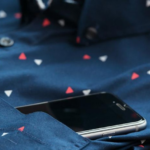
What’s Appropriate to Wear? The Men’s Guide to Mastering Office Casual
Whether it’s termed “office casual”, “business casual”, or “smart casual”, dressing casually for the office can feel like a minefield. The risk of turning up looking too scruffy when you have an important meeting with clients can be enough to have you reaching for the full business suit and tie. However, hitting the right note with business casual doesn’t have to be a headache if you get to know a few basic rules.
1. Understanding business casual
Business casual has been gaining ground as the unspoken status quo for parts of the Australian corporate world, but pinning down what it means can take a bit of work. What’s certain is business casual isn’t everyday casual; it’s casual for business.
The goal of business casual is to look appropriately professional while being more laid back than the original corporate look of suit and tie. If you hit the right note, you’ll look neat, tidy, and casual – without being too casual and relaxed. A good way to think about business casual is it’s not dressing up a casual outfit but dressing down a standard business outfit consisting of a suit and tie.
2. Business casual does not include jeans, t-shirts, or sneakers
Unless your workplace specifically allows for these items, keep in mind business casual doesn’t include jeans, t-shirts, or sneakers – together or paired with other items. As mentioned above, business casual is about dressing down from standard or traditional business attire, but it doesn’t go as far as weekend-wear items like jeans and t-shirts. Avoiding turning up to work in these unless your colleagues are also incorporating these items into their business casual attire and you feel sufficiently professional in jeans and sneakers at work.
3. Clean and tidy
Your work pieces should always be immaculately clean and tidy. Avoid wrinkled shirts and scruffy polo tops, and opt for a well-ironed top and pressed pants instead. Keep blazers with visible signs of wear for the weekend, even if it’s your favourite one.
4. Well-fitted pieces are essential
Opt for clean-cut rather than loose or baggy lines when it comes to casual business attire. Check for fit when choosing your outfit for the day, as nothing will ruin a professional casual look more quickly than poorly fitting pieces. Find the right happy medium between a skinny fit and the too-large look. Work with a good tailor to adjust your work pieces if necessary.
5. If in doubt, lean towards formal
When in doubt, keep in mind overdressing is better than underdressing. Add a smart blazer and layer a collared shirt under your woollen jumper, and pair a polo with dress trousers rather than chinos. If you think you might be dressing too casually, add a formal element, such as a jacket or collar to emphasise the business tone of your outfit.
6. Building your wardrobe with business casual essentials
Build your wardrobe with business casual must-haves and you’ll have a range of go-to pieces you can match up for any day.
- Blazer – Have a few well-fitted blazers in different colours. The blazer should fit snugly around the shoulders and through the waist, and finish up just under the backside.
- Shirts – Short-sleeved and full-sleeve shirts are both suitable for business casual outfits.
- Polos – Polos are accepted business casual items for the summer months. It’s a good idea to choose block colours rather than loud patterns or stripes for the office.
- Knits – Knitwear, like sweaters and cardigans, is great for the cooler seasons as long as you choose block colours and a slim fit for the office. You could wear your knits as a middle layer between your blazer and shirt or as a replacement for your blazer.
- Trousers – Trousers, whether you choose chinos or dress trousers, likewise should be well-fitted, with lightweight fibres like cotton in summer and woollen blends for the winter months.
- Suits – Suits may still have a place in your business casual wardrobe, especially when you have important client presentations and meetings. Your office might still expect you to wear a suit to work, but if business casual is the dress code, you can probably loosen the top button of your shirt and leave the tie at home.
- Shoes – Loafers, Oxfords, Derbies, brogues, and monk straps are suitable for business casual attire.
- Tie – Your ties could still feature in your business casual wardrobe, especially for those times when you think you might be hovering too far towards the casual end of the spectrum. Add a tie to a jacket-less outfit to lean back towards formal. As you can see, learning the art of business casual is not complicated. By building your business casual wardrobe and observing the no-jeans-sneakers-or-t-shirts rule, you can enjoy looking smart yet relaxed at the office.
Marketplace Gungahlin is a modern shopping centre with an eclectic mix of retailers that are ready to assist with your business attire needs. To start building your casual business basics, visit our quality fashion retailers like Ed Harry and Rockmans – the Emporium, and Kim Tailor Alterations will help you achieve the perfect fit at a great price.

